Our food system isn’t ready for the climate crisis
“We’ll never get back all the diversity we had before, but the diversity we need is out there,” says Matthew Reynolds, head of wheat physiology at CIMMYT.
“We’ll never get back all the diversity we had before, but the diversity we need is out there,” says Matthew Reynolds, head of wheat physiology at CIMMYT.
Germplasm banks around the world are protectors of genetic diversity, altogether preserving roughly 700,000 samples of wheat varieties from fields far and wide. Thomas (Tom) Payne, the head of CIMMYTs Wheat Germplasm Collection, or genebank, manages the Mexico-based collection of nearly 150,000 accessions from over 100 countries. He has been affiliated with CIMMYT since 1988, and has dedicated his career to wheat improvement and conservation, working in Ethiopia, Mexico, Syria, Turkey and Zimbabwe. In addition to managing the genebank, he is the chair of the CGIAR Genebank Managers Group, has served as secretary to the CIMMYT Board of Trustees, manages the CIMMYT International Wheat Improvement Network and was awarded the Frank N. Meyer Medal for Plant Genetic Resources in 2019.
In advance of his retirement in July 2021, CIMMYT senior scientist Carolina Saint Pierre sat down with Tom Payne over Zoom to ask him a few questions from the wheat breeding team about his lifetime of experience in wheat biodiversity conservation.
What is your favorite Triticum species?
Triticum aestivum, bread wheat, is my favorite. Bread wheat feeds around 2.7 billion people worldwide. In fact, more food products are made from wheat than from any other cereal. An interesting detail about Triticum aestivum, however, is that it’s a hexaploid, meaning that it is a distinct species formed from three separate species. The inherent genetic diversity resulting from its three ancestral species and its ability to naturally incorporate genetic diversity from other species gives breeders a broad palette of genetic diversity to work with for current and future needs.
How can genebank managers of vital food crops add diversity to existing collections?
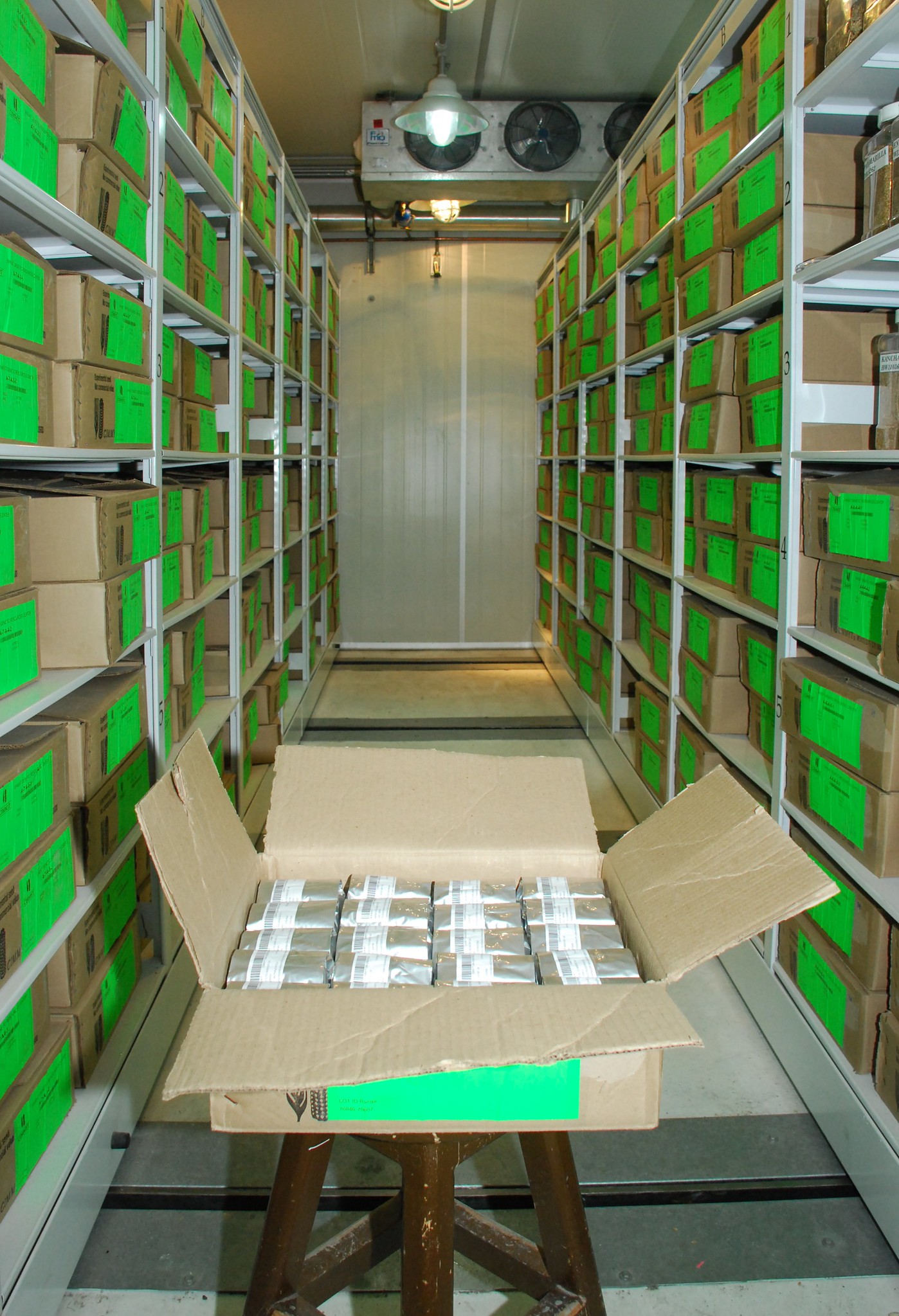
There are many vital genebanks, with community, national, regional, and international affiliations. Harmonization of these efforts into a global conservation network is needed. In wheat, for example, we do not adequately understand the diversity of the crop’s wild relatives. A recent study from Kansas State University observed that two thirds of the accessions of Aegilops tauschii held by several key collections were duplicates. This is an alarm to the global wheat community. The ex-situ collection of a critical species is less representative and more vulnerable than the sheer number of accessions would imply. We need to conduct a thorough characterization of all crop wild relatives to assess the risks to diversity, and a gap analysis of newly collected materials to ensure that their long-term conservation adds unique diversity to existing collections.
Which of the Triticum species that you store in the CIMMYT wheat genebank should, in your opinion, be explored much more?
Species that can readily cross with cultivated wheat, both bread wheat and durum wheat, should have intensified conservation and characterization efforts. Examples of these include Triticum monococcum subspecies monococcum (Einkorn) and Triticum turgidum subspecies dicoccon (Emmer).
What were the most surprising results from the genetic diversity analyses of nearly 80,000 wheat accessions from the CIMMYT genebank?
Modern, molecular genetic tools confirmed, for the most part, the centuries-old Linnaean taxonomic classification of Triticum and Aegilops species. There are generally two broad schools of taxonomists, “lumpers” and “splitters.” The former groups species based on a few common characteristics, and the latter defines multiple taxa based on many traits. The Seeds of Discovery work, in partnership with Michiel van Slageren from Kew Gardens, is confirming the salient taxonomy of the Triticum genus. Van Slageren previously studied and published a taxonomic monograph on the wheat ancestral Aegilops genus.
How can a genebank managers help in pre-breeding?
Maintaining native genetic diversity for use in the future is an important role that genebank managers play in pre-breeding and applied breeding processes. Furthermore, the identification of rare and odd variation plays an important role in understanding trait expression. Genebank managers are now gaining a stronger understanding of the genetic representativeness of their collections, and they can identify where gaps in the conserved genetic diversity may exist. A better understanding of the collections will enable their sustainable conservation and use.
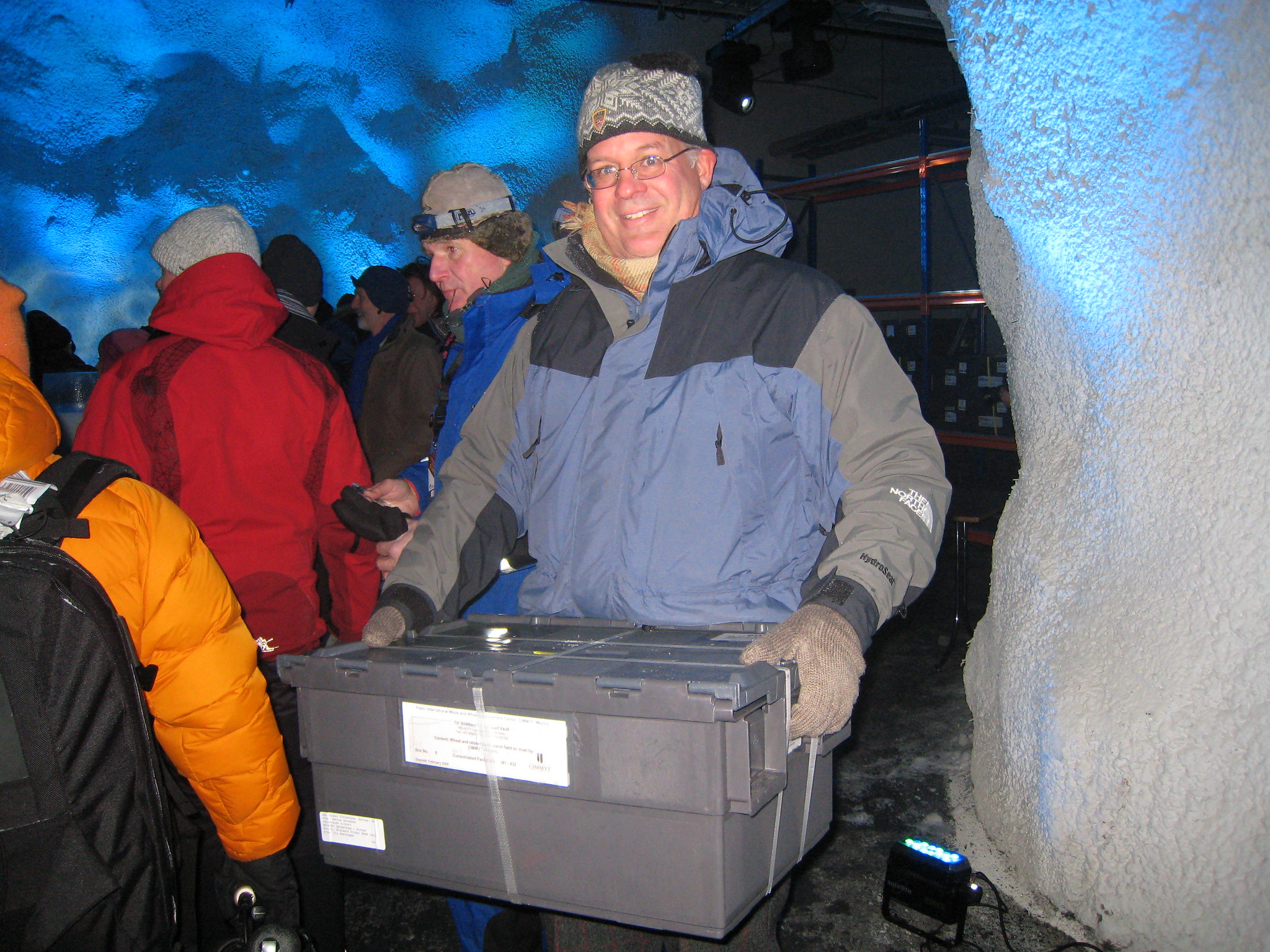
What would you consider the biggest challenge when striving for genetic diversity in breeding wheat for the future?
CIMMYT and other CGIAR Centers are rightfully proud of their stewardship of global public goods, and the free access to and distribution of germplasm and information. Yet outside of the CGIAR, the two-way sharing of germplasm and knowledge is often still not realized by many crop communities. International agreements have attempted to bridge recognition of intellectual property rights with guaranteed access and benefit-sharing mechanisms. However, the playing field remains uneven between public and private organizations due to varied levels of investment and exclusivity, access to technology and information, and marketability.
What is one way we can ensure long-term conservation of staple crops around the world?
In the past few years, several internationally renowned germplasm collections have been destroyed due to civil conflicts, natural disasters and fires — for example in Aleppo, Cape Town and Sao Paulo. Each time, we hear what a shame it was that the destroyed heritage was lost, that it was irreplaceable and beyond value. When a genebank loses an accession, the ancestral lineage extending hundreds of generations becomes permanently extinct. Genebank managers recognize this threat, and hence duplicate samples of all accessions are now slowly being sent to the Global Seed Vault in Svalbard for long-term preservation.
Cover photo: Tom Payne, Wheat Germplasm Collections & International Wheat Improvement Network Manager. (Photo: X. Fonseca/CIMMYT)
Seed banks may be another resource for securing Indigenous seed, although these banks have other missions as well. The International Maize and Wheat Improvement Center (CIMMYT), maintains seed banks and programs to preserve seeds native to specific regions. The group also leads the CGIAR Research Programs on Maize and Wheat and the Excellence in Breeding Platform to characterize genetic diversity so it can be used in conventional breeding programs to develop wheat and maize varieties that can address climate change, pest and disease resistance and yield to help manage food security.
“About 100 seed banks exist worldwide with seed used for cultural or heritage purposes and for production. CIMMYT has varieties that have been cultivated, conserved and cherished as grain and food crops for thousands of years,” says Tom Payne, head of the non-profit organization’s wheat germplasm collections and International Wheat Improvement Network. “Our seed bank conserves varieties that can be a source for finding old genes that will solve new problems. We have to have that diversity to address changing production environments.”
Read more here: https://seedworld.com/seed-seekers-seed-keepers-seed-growers/
Seed security is the first step towards food security. The International Maize and Wheat Improvement Center (CIMMYT) preserves 28,000 unique seed samples of maize and 150,000 of wheat at its genebank in Mexico.
The Global Seed Vault in Svalbard opened in 2008. Since then, CIMMYT has duplicated and deposited 50 million seeds — 170,000 samples of maize and wheat — at Svalbard.
This year, CIMMYT sent 24 boxes of seed, with 332 samples of maize and 15,231 samples of wheat.
Join these seeds on a journey, as they travel more than 8,000 km from CIMMYT’s genebank in Mexico to the Global Seed Vault in the Arctic.
A supermarket, rather than a museum
This treasure, kept in the global network of genebanks, is key to ensuring sustainable, nutritious agricultural systems for future generations.
The purpose of genebanks is not just to preserve seed, but to use its biodiversity to address the needs of the future — and the needs of today.
Climate change is already impacting resource-poor farmers and consumers in low- and middle-income countries. Researchers and breeders at CIMMYT are rolling out solutions to these challenges, based on the diverse genetic resources kept in the genebank. As a result, farmers can use new varieties that yield more, need less inputs, and are more tolerant to drought or heat.
Our internal estimates show that about 30% of maize and more than 50% of wheat grown worldwide can be traced to CIMMYT germplasm.
Humanity’s legacy
Maize and wheat originated about 10,000 years ago. Since then, it’s survived war, drought, diseases, migration, birds, low yields — and the hard choice between feeding children or planting again.
Keepers of genebanks around the world are only the depositors of this legacy, which belongs to all humanity. CIMMYT will continue to preserve these seeds and to make their biodiversity available to researchers and famers, to solve today’s and tomorrow’s most pressing issues.
Cover photo: A NordGen staff member brings a box of seed into the Global Seed Vault in Svalbard, Norway. (Photo: Thomas Sonne/Common Ground Media for NordGen)
On February 27, 2020, the International Maize and Wheat Improvement Center (CIMMYT) opened a new greenhouse at its research station in Tlaltizapán, in Mexico’s state of Morelos. The Garrison Wilkes Center for Maize Wild Relatives is named after a pioneering scientist in the field of maize genetics.
“The name teosinte refers to a group of wild relatives of maize,” said Denise Costich, manager of the maize germplasm collection at CIMMYT. “The seven members of this group — all in the genus Zea — are more grass-like than maize, produce hard-shelled seeds that are virtually inedible, and are capable of enduring biotic and abiotic stressors better than their crop relative.” Teosintes must be protected, Costich explained, as they possess some desirable qualities that could help improve maize resilience in difficult conditions. Since CIMMYT’s Germplasm Bank is the global source for teosinte seed, the new greenhouse, designed exclusively for the regeneration of teosinte accessions from the bank collection, will ensure that there will always be seed available for research and breeding.
Garrison Wilkes was one of the first scientists to emphasize the importance of the teosintes and their close biological relationship to maize. He spent more than 50 years working on maize conservation in collaboration with CIMMYT. Together with scientists such as Angel Kato, a former CIMMYT research assistant and longtime professor, Suketoshi Taba, former head of CIMMYT’s Germplasm Bank, and Jesus Sanchez, as researchers at the University of Guadalajara, he contributed to the development of the global maize collection of CIMMYT’s Germplasm Bank as it exists today.
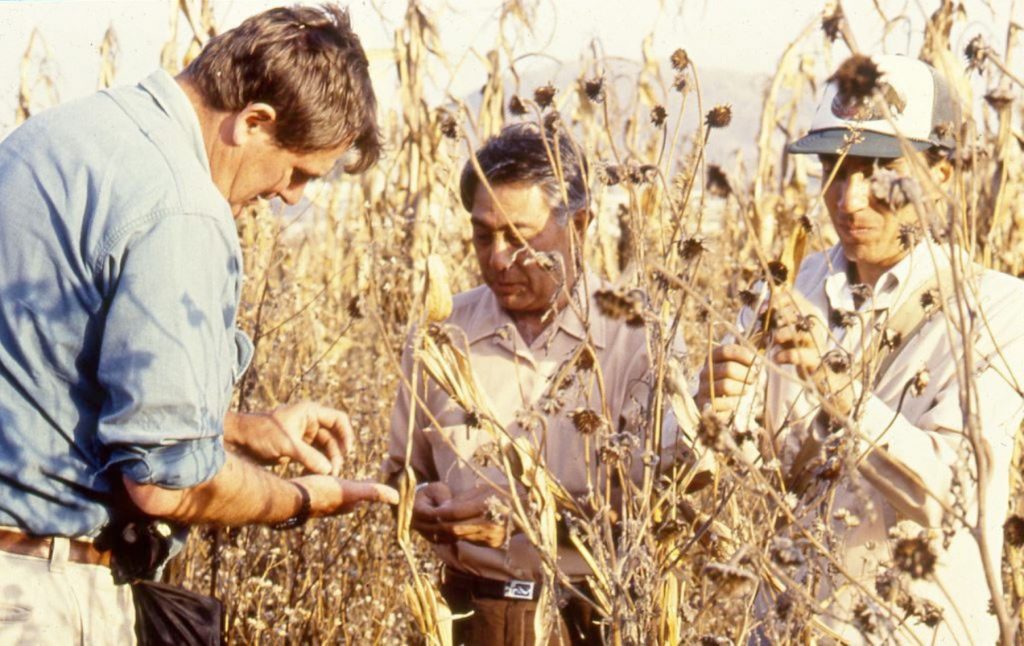
Keeping seeds alive
Teosintes are the wild plants from which maize was domesticated about 7,000 years ago. They are durable, with natural resistance to disease and unfavorable weather, and grow primarily in Mexico, Guatemala, Honduras and Nicaragua. “What makes [teosinte] a wild plant is its seed dispersal. Corn doesn’t disperse its seed — it’s stuck on the cob. To be a wild plant means they can sow their own seed and survive,” explained Wilkes. Keeping these seeds alive could be the key to developing resilient modern maize with the potential to feed millions.
One of the difficulties in growing maize and teosinte in Tlaltizapán to produce seed for global distribution is that the station is surrounded by sugarcane fields. Sugarcane carries a disease called the Sugarcane Mosaic Virus (SCMV), to which maize and teosinte are susceptible, and SCMV-positive seed cannot be distributed outside of Mexico. Additionally, if teosinte and maize are grown in close proximity to one another, it becomes very difficult to control gene flow between them via airborne pollen. Several experiments, ranging from growing the teosinte in pots to monitoring that the maize and teosinte flower at different times, could not fully guarantee that there was no cross-contamination. Therefore, in order to continue to cultivate maize and teosinte within the same station, the CIMMYT Germplasm Bank needed to create an isolated environment.
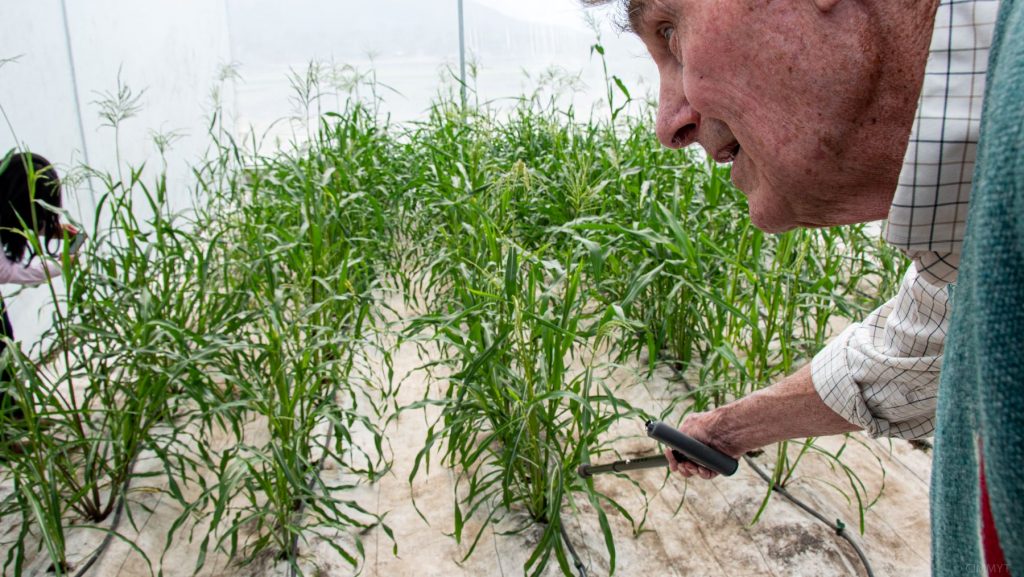
On average, the teosinte seed collections in the germplasm bank were nearly 19 years old, and 29% were not available for distribution due to low seed numbers. Researchers needed to find a way to produce more high-quality seed and get started as soon as possible. “My staff and I visited Jesus Sanchez, a world-renowned teosinte expert, and learned as much as we could about how to cultivate teosinte in greenhouses,” explained Costich “We realized that this could be the solution to our teosinte regeneration problem.”
Construction of the new greenhouse began in late 2017, with funding received from the 2016 Save a Seed Campaign — a crowdfunding initiative which raised more than $50,000. Donations contributed to activities such as seed storage, tours and educational sessions, seed collection, seed repatriation and regeneration of depleted seeds. With the new greenhouse, CIMMYT scientists can now breed teosinte without worrying about maize contamination, and prevent the extinction of these valuable species.
CIMMYT holds most of the world’s publically accessible collections of teosinte. “The wild relatives are a small part of our collection, but also a very important part, as they are theoretically the future of genetic diversity,” said Costich.“They have been important in the evolution of the crop. If we lose them, we can’t learn anything more from them, which would be a shame.”
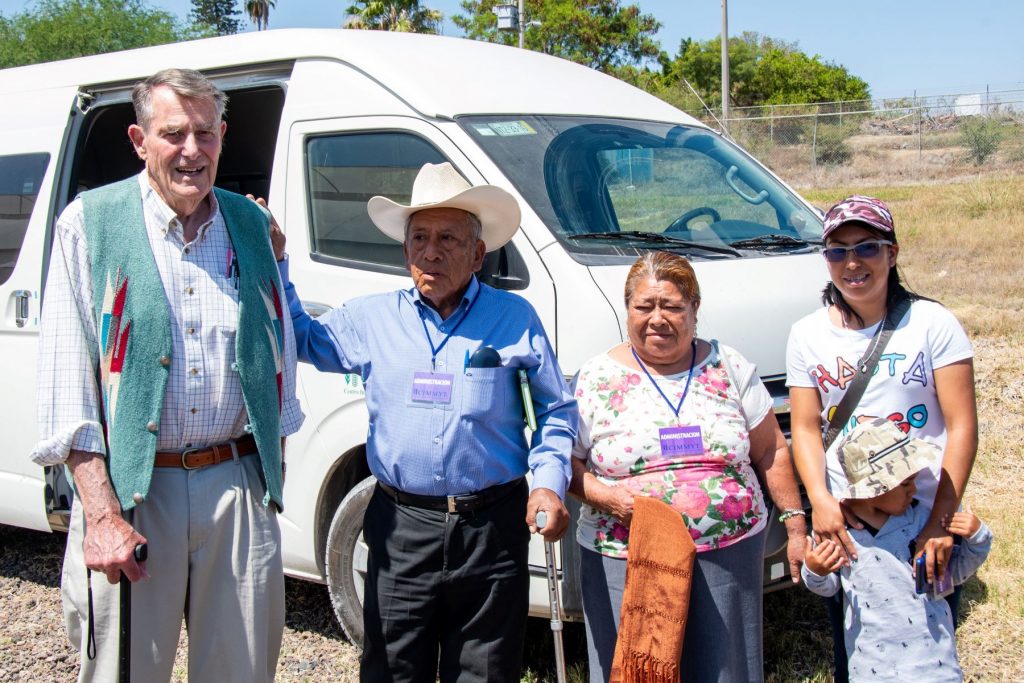
Some of Mexico’s favorite dishes are taking on a new hue with blue corn chips, blue tortillas or blue tamales. But should breeders, millers, processors and farmer organizations invest in expanding the production of blue maize and blue maize products? Are consumers really interested, and are they willing to pay more?
CIMMYT markets and value chain specialist Trent Blare explains, in one minute, the results of his study, which gives insight into Mexican consumers’ preferences and demand for blue maize tortillas. Consumers near Mexico City perceived blue maize tortillas to taste better and were willing to pay up to a third more to buy them for special family events or to consume them in a restaurant .
Step into supermarkets or restaurants in Mexico City and surrounding towns and you might see products made from blue maize — food which would not have been available just a few years ago. Some of Mexico’s favorite dishes are taking on a new hue with blue corn chips, blue tortillas or blue tamales. But should breeders, millers, processors and farmer organizations invest in expanding the production of blue maize and blue maize products? Are consumers really interested, and are they willing to pay more?
These are some of the questions researchers at the International Maize and Wheat Improvement Center (CIMMYT) in Mexico set out to answer. They set up study to test consumer preferences and willingness to pay for this blue maize tortillas.
Maize is a main staple crop in Mexico and tortillas form the base of many traditional dishes. Blue maize varieties have existed for thousands of years, but until recently they were mostly unknown outside of the farming communities that grew them. In addition to its striking color, the grain has gained popularity partly due to its health benefits derived from anthocyanin, the blue pigment which contains antioxidants.
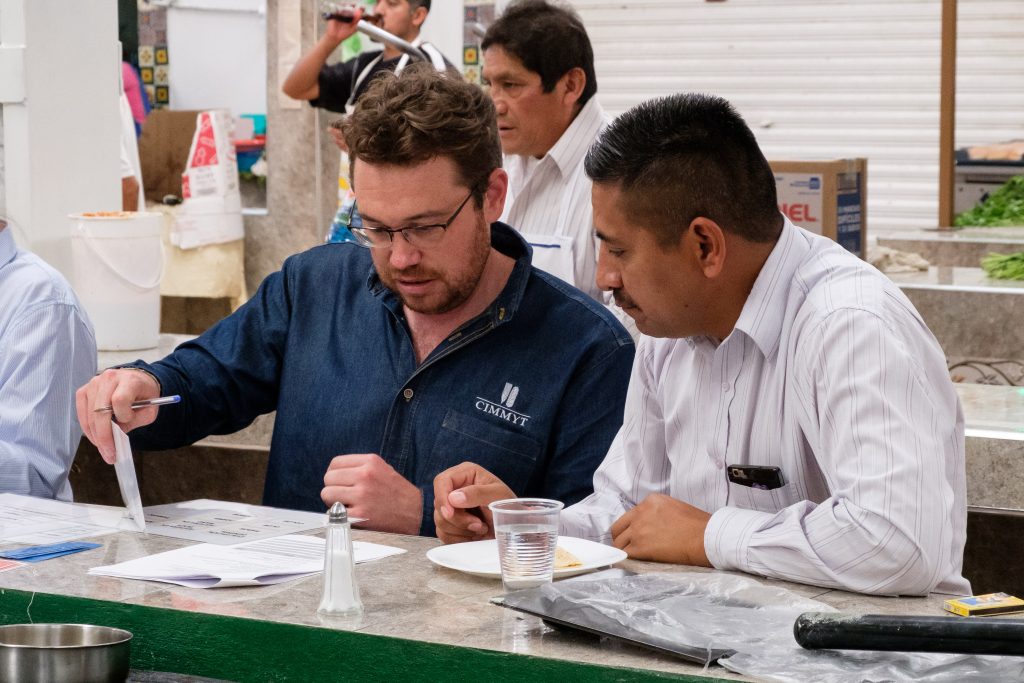
“Demand for blue maize has skyrocketed in the past few years,” said Trent Blare, economist at CIMMYT and the leader of the research.” Three years ago, white and blue maize sold at the same price. One year ago, blue maize cost just a few Mexican pesos more, and now blue maize is worth significantly more. However, we still lack information on consumer demand and preferences.”
According to Blare, the end goal of the study is to explore the demand for blue maize and try to better understand its market potential. “If we want farmers who grow blue maize to be able to get better market value, we have to know what the market looks like.”
This research received funding from Mexico’s Agency for Commercialization Services and Agricultural Market Development (ASERCA), which has been working with farmer organizations on post-harvest storage solutions for their maize. As blue maize is softer than typical white or yellow varieties, it requires special storage to protect it against insects and damage. In order to help provide farmers with the correct maize storage technology, ASERCA and others in Mexico will benefit from a deeper understanding of the market for blue maize in the region. In addition, researchers were interested to know if there is a premium for growing blue maize, or for making tortillas by hand. Premiums could help convince farmers to invest in post-harvest technologies and in the production of blue maize.
“There is this idea that demand should come from producers, but there are many steps along the maize value chain. We’re basically going backwards in the value chain: is there demand, is there a market, going all the way from the consumer back to the farmer,” Blare explained.
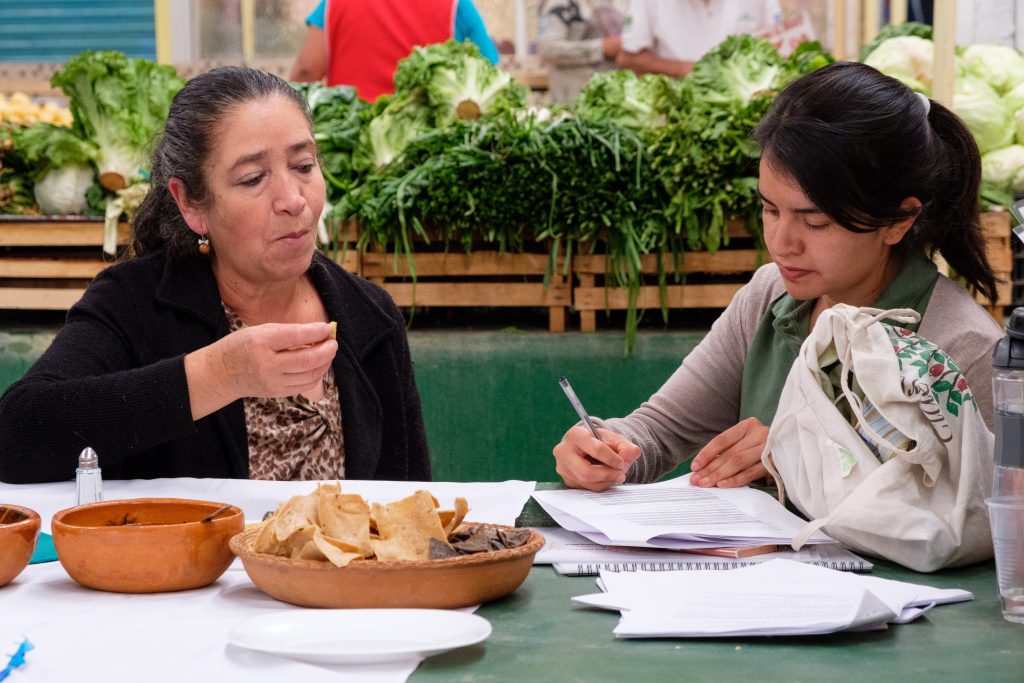
A matter of taste
The study was conducted in Texcoco, just outside of Mexico City, where CIMMYT’s global headquarters are based. This town in the State of Mexico was chosen because of its long history growing and consuming blue maize. Interviews were held in three different locations, a local traditional market and two local shopping malls, in order to ensure that different socioeconomic groups were included.
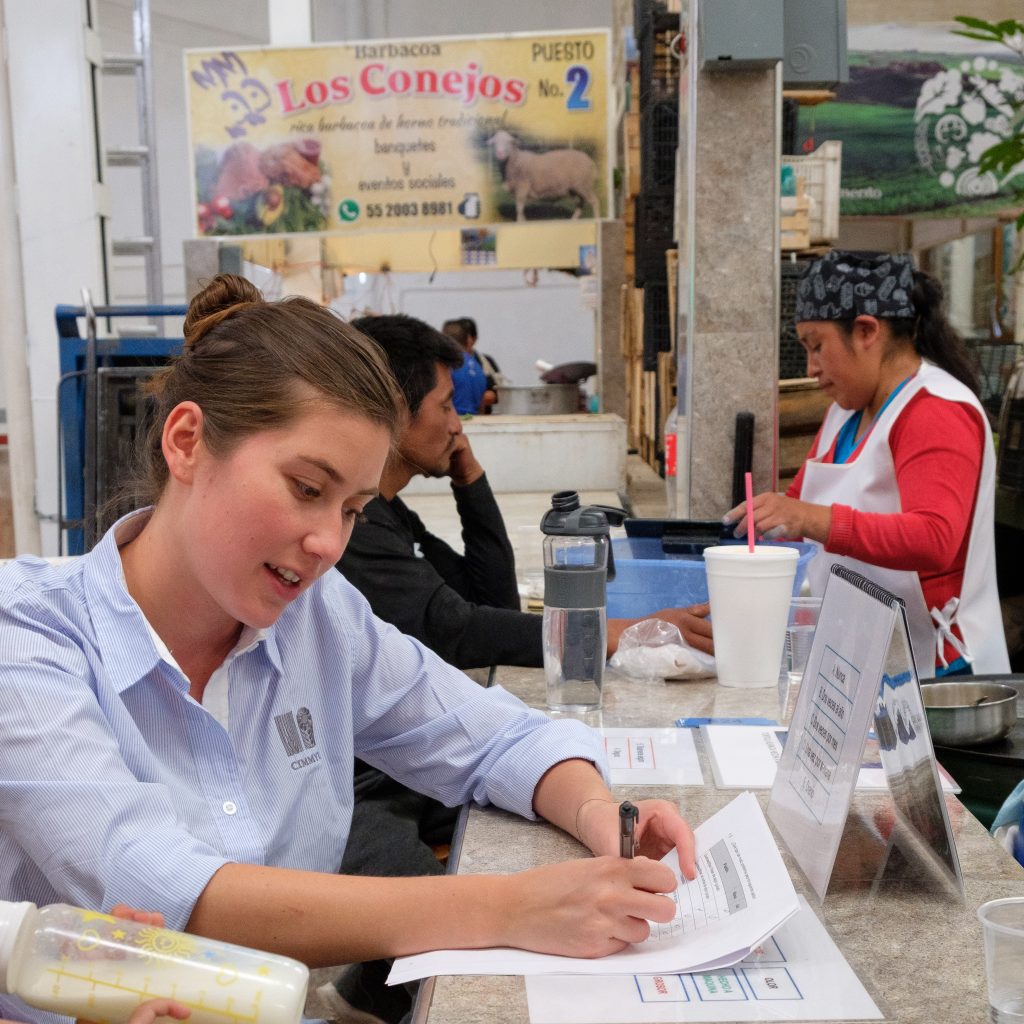
The team interviewed 640 consumers, asking questions such as where do they buy different types of tortillas, in which dishes they use different types of tortillas and if they faced difficulties in purchasing their preferred tortilla. The team also conducted sensory analysis and attributes, and gave study participants a choice between handmade blue maize tortillas, handmade white maize tortillas, and machine-made white maize tortillas.
The interviewees were given three different scenarios. Would they be willing to pay more for blue tortillas compared to other tortillas if eating quesadillas at a restaurant? To serve during a special event or visit from a family member? For everyday use?
The answers allowed researchers to quantify how much more consumers were willing to pay and in what circumstance, as they were given different price points for different types of tortillas in different scenarios.
True colors
The researchers found that preferences for blue and white maize were distinct for different dishes, and that there was a particular preference for blue maize when used in traditional dishes from this region, such as tlacoyos or barbacoa. A majority of consumers was willing to pay more for higher quality tortillas regardless of the color, as long as they were made handmade and fresh from locally grown maize. Interviewers also saw a noticeable difference in preference for blue tortillas depending on the situation: blue tortillas are demanded more for special occasions and in traditional markets.
“I found it fascinating that there is a difference in blue maize consumption based on the circumstance in which you are eating it.” Blare said. “This is one of the innovations in our demand study — not analyzing the demand for a food product in general but analyzing differences in demand for a product in different contexts, which is important as food is such an important component for celebrations.”
“We think there is potential to replicate this in other places in Mexico, to see consumer preference and price willingness for blue maize and other value-added maize products,” said Jason Donovan, senior economist at CIMMYT. “This will not just inform farmers and markets but also how to do this kind of research, especially in middle-income economies. This study is the first of its kind.”
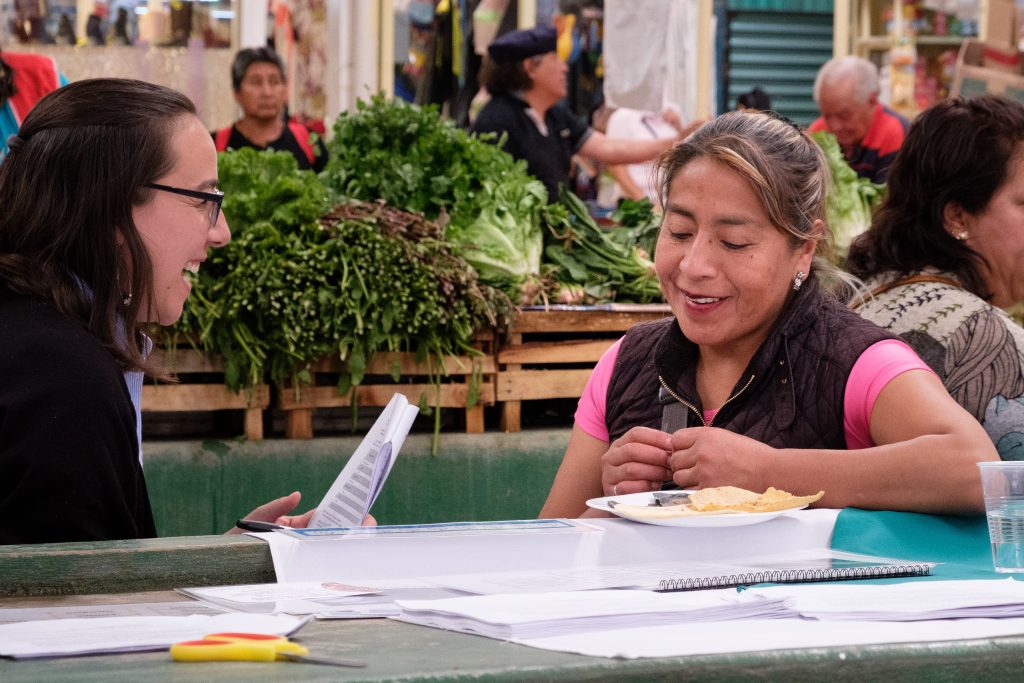
Still got the blue
Overall, the results revealed that women were willing to pay 33% more for blue maize tortillas while men were willing to pay 19% more. For every additional year of education, a consumer was willing to pay 1% more for blue maize tortillas. Interestingly, a person’s income had no effect on her or his willingness to pay for more blue maize tortillas. Many people interviewed expressed a preference for blue maize, but commented that they cannot always find it in local markets.
The information collected in these choice experiments will help farmers, breeders, and other actors along the maize value chain make more informed decisions on how to best provide blue maize varieties to the public — and give consumers what they want.
“It was a very interesting experience, I’ve never participated in a survey like this before and I think it is important to take the time to think about our decisions about food,” said Brenda Lopez, one of the interviewees in the choice experiment. Lopez preferred the handmade tortillas, especially those made with blue maize. “I think they have more flavor,” she said. “I just bought handmade tortillas in the market before participating in this survey, but I had to buy white because there was no blue available.”
Another interviewee, Luis Alcantara, agreed. “I prefer blue because of the flavor, the texture, even the smell,” he said. “At home we eat machine-made tortillas because it is hard to find handmade tortillas, and even if you do, they are not blue. We would buy blue if we could.”
Cover photo: Blue maize tortillas (Photo: Luis Figueroa)
In the early 20th century, Aaron Aaronsohn, a prominent agronomist best known for identifying the progenitor of wheat, began looking for durum wheat landraces in Israel. He traveled to villages across the country, carefully collecting and recording details of the local varieties used in each area.
This task was not without purpose. Aaronsohn recognized that as increasing numbers of settlers like himself came to the territory, the varietal change from the introduction of new and competitive wheat varieties and the rapid intensification of agriculture would soon cause all the traditional structures he had identified to disappear.

Aaronsohn was one of the first to begin collecting germplasm in the region, but others saw the importance of collecting before large-scale change occurred. For example, Russian botanist Nikolai Vavilov gathered samples from Israel on one of his expeditions through the Middle East. By the end of the century, a number of collections had been established, but overall efforts at conservation were fragmented.
“That’s why we say the collection was on the verge of extinction,” explains Roi Ben-David, a researcher at the Volcani Center, Israel’s Agricultural Research Institute (ARO). “There were single accessions in genebanks around the world but no one really gave them special treatment or saw their value. Many were in private collections; others were simply lost.”
When Ben-David and his colleagues began looking for landraces six years ago, even the collection housed at the Israeli Genebank (IGB) was disappointing, with many samples stored in unmarked boxes in sub-optimal conditions. “When we came in nobody was really trying to study what we had and put it together to represent the area’s wheat landscape as it was 100 years ago.”
Long-term efforts to restore and conserve a collection of Israeli and Palestinian wheat landraces (IPLR) have led to the restoration of 930 lines so far, but there are many varieties that cannot be recovered. Therefore, it came as a great surprise to Ben-David when he arrived at the International Maize and Wheat Improvement Center (CIMMYT) headquarters in Mexico and stumbled upon one of the collections presumed lost. “I think it was actually my first week at CIMMYT when I spotted a demonstration plot growing one of the lost varieties — a subset of the Ephrat-Blum collection — and I couldn’t believe it.”
He had heard about this collection from the late Abraham Blum, but had never been able to locate it. “Someone might have moved the seeds, or maybe the box was not well labelled and thrown out. We don’t know, but needless to say it was a very good surprise to rediscover 64 of our missing lines.”
What prompted you and your colleagues to start looking for landraces in Israel?
We began because we recognized local landraces are good genetic resources but unfortunately, we couldn’t find any. It wasn’t so much that they didn’t exist, but the accessions were scattered across the world, mostly in private collections in countries like the USA or Australia. The Israeli Genebank, which sits only two floors above my office, had a few buckets of germplasm but nobody really knew what was inside.
The Middle East and the Fertile Crescent are centers of diversity, not only for wheat but for all crops that were part of the Neolithic revolution 10,000 years ago. They started here – the exact point of origin was probably in what is now southeast Turkey – so we have had thousands of years of evolution in which those landraces dominated the agricultural landscape and adapted to different environments.
Why do you think so much of the collection was lost?
The lines from Israel were lost because their conservation simply wasn’t prioritized. Losses happen everywhere but what was missing in this case was the urgency and understanding of just how important these collections are. Luckily, the current manager of the IGB, who is a fundamental partner in building the IPLR, understood the need to prioritize this and allocated a budget to conserve it as one collection.
What is the value of conserving landraces and why should it be prioritized?
Landraces are an extremely important genetic resource. Wild relatives are the biggest treasure, but breeders are usually reluctant to use them because they are so very different from modern varieties. So landraces form the link between these two, having already been domesticated and developed within farming systems while remaining genetically distinct from the modern. In wheat, they’re quite easy to spot because of how tall they are compared to the semi-dwarf varieties that replaced them in the 20th century.
There are two main reasons why we need to prioritize conservation. First, we believe that the evolution under domestication in this region is important to the community as a whole. Second, it is now a critical time, as we’re getting further from the time in which those traditional lines were in use. The last collection was carried out in the 1980s, when people were still able to collect authentic landraces from farmers but this is just not possible any more. We travelled all over the country but the samples we collected were not authentic – most were modern varieties that farmers thought were traditional. Not everybody knows exactly what they’re growing.
The time factor is critical. If we were to wake up 50 years from now and decide that it’s important to start looking for landraces, I don’t know how much we could actually save.

Are there any farmers still growing landraces in Israel?
When we started looking for farmers who are still growing landraces we only found one farm. It is quite small – only about ten acres shared between two brothers. They grow a variety which is typically used to make a traditional food called kube, a kind of meat ball covered in flour and then then either fried or boiled. If you boil it using regular flour it falls apart, so people prefer to use a landrace variety, which is what the brothers grow and are able to sell for up to six times as much as regular durum wheat in the market. However, they’re not really interested in getting rich; they’re just trying to keep their traditions alive.
How are you and your colleagues working to conserve the existing collection?
There are two approaches. We want to develop is ex-situ conservations to preserve the diversity. As landraces are not always easy to conserve in a genebank, we also want to support in-situ conservation in the field, like traditional farmers have done. Together with the IGB we’ve distributed seed to botanical gardens and other actors in the hope that at least some of them will propagate it in their fields.
Having established the collection, we’re also trying to utilize it for research and breeding as much as possible. So far we’ve characterized it genetically, tested for drought tolerance and other agronomic traits and we’re in talks to start testing the quality profile of the lines.
Did you continue working on this while you were based at CIMMYT?
Yes, this was an additional project I brought with me during my sabbatical. The main success was working with Carolina Sansaloni and the team at the Genetic Resources program to carry out the genotyping. If it were left to my own resources, I don’t think we could have done it as the collection contains 930 plant genotypes and we only had the budget to do 90.
Luckily, CIMMYT also has an interest in the material so we could collaborate. We brought the material, CIMMYT provided technical support and we were able to genotype it all, which is a huge boost for the project. We had already been measuring phenotypes in Israel, but now that we have all the genetic data as well we can study the collection more deeply and start looking for specific genes of interest.
What will happen to the lines you discovered at CIMMYT?
They’ve been sent back to Israel to be reintegrated into the collection. I want to continue collaborating with people in CIMMYT’s Genetic Resources program and genebank to do some comparative genomics and assess how much diversity we have in the IPLR collection compared with what CIMMYT has. Is there any additional genetic diversity? How does it compare to other landraces collections? That is what we want to find out next.
Roi Ben-David is based at Israel’s Agricultural Research Organization (ARO). He works in the Plant Institute, where his lab focuses on breeding winter cereals such as wheat. He has recently completed a one-year sabbatical placement at the International Maize and Wheat Improvement Center (CIMMYT).
CIMMYT’s germplasm banks contain the largest and most diverse collections of maize and wheat in the world. Improved and conserved seed is available to any research institution worldwide.
Claudio Ayala is an experienced Data Management Coordinator with a demonstrated history of working in the research industry. He has a Master’s degree focused on Information Systems and Applied Computing and is skilled in analytics, database management, and the development of tools for effectively capturing, curating, storing and integrating different datasets.
Carolina Sansaloni is a molecular geneticist and leader of the Genetic Analysis Service for Agriculture, a high throughput genotyping platform managed by CIMMYT’s Seeds of Discovery initiative that uses Diversity Arrays Technology. She regularly contributes to projects that have strategic significance in wheat pathology, disease resistance, quality, functional genomics and bioinformatics.
Sansaloni also works on the wheat Global Diversity Analysis, which characterizes and analyses seeds in genebanks at CIMMYT and the International Center for Agricultural Research in Dry Areas (ICARDA). Her team has characterized around 100,000 wheat accessions, including more than 40 species that represent 40 percent of the CIMMYT genebank and almost 100 percent of the ICARDA ‘s genebank wheat collection. This is an incredible and unique resource for wheat scientists that provides a genetic framework to help select the most relevant accessions for breeding.
Sarah Hearne serves as the Chief Science and Innovation Officer (CSO) at CIMMYT, leading efforts to implement a cohesive, interconnected, and multidisciplinary approach to research and partnerships. Her role focuses on fostering collaboration, leveraging complementarities across CIMMYT’s core research areas, and ensuring the organization remains future-ready. Through strategic alignment, she drives CIMMYT’s ability to deliver on its cutting-edge mission and vision, advancing sustainable agricultural solutions on a global scale.
Kevin Pixley is the Dryland Crops Program Director (DCP) and Wheat Program Director a.i. (GWP)
Pixley was formerly the Genetic Resources Program (GRP) director where he helped formulate, facilitate, and oversee inter-disciplinary strategies to enhance the relevance and impacts of wheat and maize research to improve livelihoods, especially for resource-poor farmers.
Pixley and his research team use genomics, phenomics and informatics to characterize and enhance the conservation and use of wheat and maize biodiversity through CIMMYT’s Seeds of Discovery initiative, where they explore the use of crop biodiversity to address novel opportunities, including enhanced sustainability of farming systems, improved nutritional or health outcomes or value-addition for farmers. They also look for opportunities to apply novel technologies to address needs of resource-poor farmers.
His current research includes:
1) The genomic characterization of maize and wheat germplasm bank diversity and enhancing the use of diversity in breeding
2) The use of novel breeding tools, especially gene editing, to complement traditional breeding techniques
3) The development of tools and approaches to enhance the use of genomics in teaching the use of biodiversity in plant breeding
4) The legal frameworks governing and opportunities promoting fair access and sharing of benefits from genetic resources
5) The role of provitamin A carotenoids (and other anti-oxidants) in maize grain towards reducing mycotoxin contamination of grain
6) Science and society, including how to ensure equitable opportunity for all to access the potential benefits of science